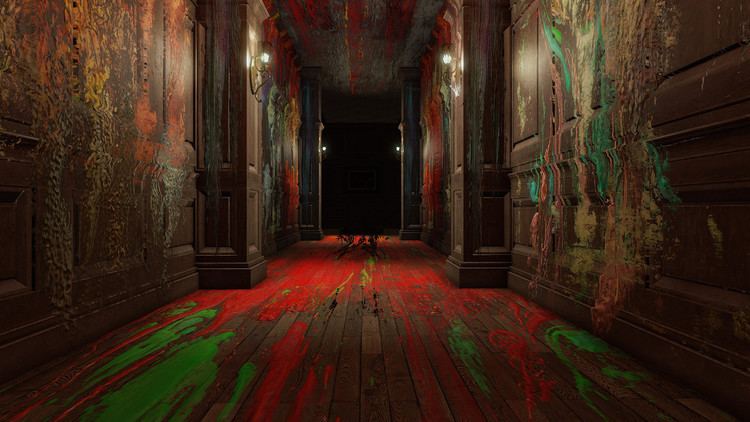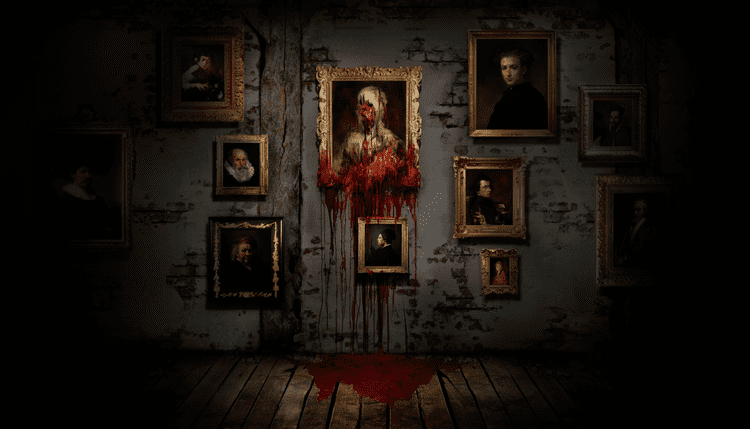8.2 /10 1 Votes8.2
7/10 GameSpot Programmer(s) Eryk Dykiel Genre Psychological horror | 9/10 Steam 4.3/5 Microsoft Composer(s) Arkadiusz Reikowski Initial release date 16 February 2016 Mode Single-player video game | |||||||||||||||||||||||||||||||||
Similar Bloober Team games, Horror games, Other games | ||||||||||||||||||||||||||||||||||
Layers of fear launch trailer
Layers of Fear is a psychological horror video game developed and published by Bloober Team for Linux, Microsoft Windows, OS X, PlayStation 4 and Xbox One, which was released worldwide on 16 February 2016.
Contents

In Layers of Fear, the player controls a psychologically disturbed painter trying to complete his magnum opus, as he navigates through a Victorian mansion, with disturbing secrets about the painter being discovered. The gameplay, presented in first person perspective, is heavily story driven and revolves mostly around puzzle-solving and exploration, as the game intensifies after each level while jump scares occur often.

Layers of Fear: Inheritence was released on 2 August 2016 as a direct follow up to the first game. Here the player controls the painter's daughter with the DLC focusing on her apparent relapse into trauma after returning to her old house.
Layers of fear 1
Gameplay

The player takes control of an artist who has returned to his studio. His initial goal is to complete his masterpiece, and the player's role is to figure out how this task should be accomplished. The challenge comes from puzzles which require the player to search the environment for visual clues. The house appears straightforward at first, but it changes around the player as they explore it in first person. These changes in the environment provide scaffolding for the puzzles and provide unique alternatives to the jump scares common in other games of this genre.
The game is divided into six chapters with various items for the player to find in order to complete his work. The game is heavily dimmed, and there are objects that uncover certain aspects of the painter's history. While completing the painting, there is a letter that is slowly pieced together, which shows the origin of his masterpiece, and objects which explain the secret of the painter through dialogue flashbacks.
Plot
The unnamed protagonist returns home from a court hearing. After briefly exploring his empty house he goes to his workshop to start working on his "magnum opus". After he adds the first layer, he starts having hallucinations about his past encounters.
The man was an ambitious young painter who used his pianist wife as a model for his painting. Soon his wife became pregnant and she bore a daughter. After she gave birth, he decided to spend more time working on his paintings and he left his wife with raising their child. After buying a dog for his family, he started to have drinking problems due to constant stress and noise outside his workshop. He attached a muzzle to the dog, but pretty soon rats started to put even more stress on him, although the rats are more likely a figment of his schizophrenia. The dog might've later been killed by him or attacked by something.
His talent started to slowly decay and his vision for painting became twisted, and he began to drive away his friends by painting gory and horrific works for simple jobs, including a set of illustrations for Little Red Riding Hood. After a long period of neglect, his wife decided to burn his paintings, including his most cherished work, "The Lady In Black". He had a drunken fit and apparently beat her, driving her to leave with the child. He tried calling her multiple times but failed to reconcile with her. After some time, he got a phone call telling him that she was critically injured in a fire. She ended up horribly disfigured, but their daughter survived.
After the fire, he took his wife, now wheel-chair bound, back home so he could take care of her and their daughter. His drinking problems continued due to the constant "distractions" of their presence. After regaining her ability to walk, the wife was neglected even more because her husband thought she lacked "beauty". After the painter had another drunken outburst, the wife committed suicide in the bathroom (either by drowning or slitting her wrists in the tub). In the present day, it is revealed that he went insane and took six body parts of his wife to work on his painting: her skin as the canvas, her blood as the overlay, her bone marrow as the undercoating, a brush made from her hair, her finger for the smearing and her eye as the spectator.
There are three different endings featured in the game, each depending on the player's actions during the course of the game.
The "neutral" ending shows that the artist was working on a portrait of his wife as the masterpiece. He seemingly succeeds in creating the painting, and steps back to admire it only to see the figure of his wife devolve into a mutilated figure that proceeds to taunt him. Horrified, he grabs the painting and hurls it into a room full of identical paintings, all of which begin to laugh. It is revealed that the painter spent years shut in his house working on the same picture multiple times trying to perfect it. If the player enters the room where the artist threw the painting into, it is revealed that all the portraits are well made and resemble the artist's wife, but he can only see them as a disfigured mess. Returning to the studio, he unveils a blank canvas and begins working on the next painting as the screen fades to black.
The "bad" ending is much the same, but this time he puts his child in the painting too. He then realizes the horrible mistakes he has made and that he can never bring them back no matter how many times he tries. So he goes to the room upstairs and burns all his previous paintings along with his finished work, and apparently dies in the fire.
The "good" ending ends with a portrait of himself as his final attempt. Being finally satisfied, he decides to hang it in the room upstairs. The next shot goes to his painting on a display at a museum among other famous Victorian artists.
Reception
Layers of Fear received "generally favorable" reviews, according to video game review aggregator Metacritic.
Matt Whittaker of Hardcore Gamer gave the game a 3 out of 5 saying, "Bloober Team should feel proud that it was able to turn its fortunes around with Layers of Fear and this release is something to build upon, but it manages to miss the mark just enough to feel somewhat forgettable."
Matt Thrower from GameSpot rated the game a 7/10 saying, "Stacked up like the rickety tiers of a Gothic building, Layers of Fear proves aptly named."
Leon Hurley praised the game in a GamesRadar review, stating "it’s one of the best horror games I’ve ever played and literally creates a new tool set for interactive scares." He complimented the game's art and the "unease from a horror experience" it provides, giving it a maximum score.
Nick Monroe recommended the game in The Escapist, noting that "Layers of Fear achieves its goal of making you scared as a player, instead of just existing as something scary", but warned that the game is not recommended to gamers who are seizure prone.
Chloi Rad from IGN called Layers of Fear a "paint-by-numbers horror game that can't capitalize on its concept" that "lacks the surprises and subtlety needed to keep things interesting all the way through".
